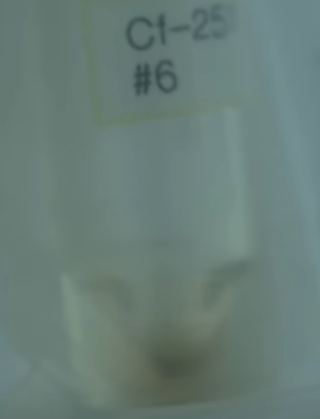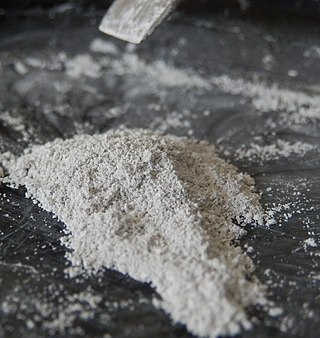
Berkelium is a synthetic chemical element; it has symbol Bk and atomic number 97. It is a member of the actinide and transuranium element series. It is named after the city of Berkeley, California, the location of the Lawrence Berkeley National Laboratory where it was discovered in December 1949. Berkelium was the fifth transuranium element discovered after neptunium, plutonium, curium and americium.

Einsteinium is a synthetic chemical element; it has symbol Es and atomic number 99. Einsteinium is a member of the actinide series and it is the seventh transuranium element. It was named in honor of Albert Einstein.

Fermium is a synthetic chemical element; it has symbol Fm and atomic number 100. It is an actinide and the heaviest element that can be formed by neutron bombardment of lighter elements, and hence the last element that can be prepared in macroscopic quantities, although pure fermium metal has not yet been prepared. A total of 20 isotopes are known, with 257Fm being the longest-lived with a half-life of 100.5 days.

Few compounds of californium have been made and studied. The only californium ion that is stable in aqueous solutions is the californium(III) cation. The other two oxidation states are IV (strong oxidizing agents) and II (strong reducing agents). The element forms a water-soluble chloride, nitrate, perchlorate, and sulfate and is precipitated as a fluoride, oxalate or hydroxide. If problems of availability of the element could be overcome, then CfBr2 and CfI2 would likely be stable.

Copper(I) thiocyanate is a coordination polymer with formula CuSCN. It is an air-stable, white solid used as a precursor for the preparation of other thiocyanate salts.
Einsteinium(III) chloride is a chloride of einsteinium.
Neptunium diarsenide is a binary inorganic compound of neptunium and arsenic with the chemical formula NpAs
2. The compound forms crystals.
Curium compounds are compounds containing the element curium (Cm). Curium usually forms compounds in the +3 oxidation state, although compounds with curium in the +4, +5 and +6 oxidation states are also known.
Einsteinium compounds are compounds that contain the element einsteinium (Es). These compounds largely have einsteinium in the +3 oxidation state, or in some cases in the +2 and +4 oxidation states. Although einsteinium is relatively stable, with half-lives ranging from 20 days upwards, these compounds have not been studied in great detail.
Americium compounds are compounds containing the element americium (Am). These compounds can form in the +2, +3, and +4, although the +3 oxidation state is the most common. The +5, +6 and +7 oxidation states have also been reported.

Disulfur diiodide is an unstable inorganic chemical compound with the chemical formula S2I2. Its empirical formula is SI. It is a red-brown solid that decomposes above −30 °C to elemental sulfur and iodine.

Berkelium tetrafluoride is a binary inorganic compound of berkelium and fluorine with the chemical formula BkF4.
Californium(III) oxide is a binary inorganic compound of californium and oxygen with the formula Cf
2O
3. It is one of the first obtained solid compounds of californium, synthesized in 1958.

Berkelium(III) oxide is a binary inorganic compound of berkelium and oxygen with the chemical formula Bk
2O
3.
Iodine trifluoride dioxide is an inorganic compound of iodine, fluorine, and oxygen with the chemical formula IO2F3. The compound was first obtained by Engelbrecht and Petersy in 1969.

Berkelium bromide is a bromide of berkelium, with the chemical formula BkBr3.

Curium(IV) fluoride is an inorganic chemical compound of curium and fluorine with the chemical formula CmF4.
Einsteinium fluoride is a binary inorganic chemical compound of einsteinium and fluorine with the chemical formula EsF3.
Einsteinium hexafluoride is a binary inorganic chemical compound of einsteinium and fluorine with the chemical formula EsF6. This is a hypothetical compound—its existence has been predicted theoretically, but the compound has yet to be isolated.

Curium(IV) oxide is an inorganic chemical compound of curium and oxygen with the chemical formula CmO2. Since all isotopes of curium are man-made, the compound does not occur in nature.









